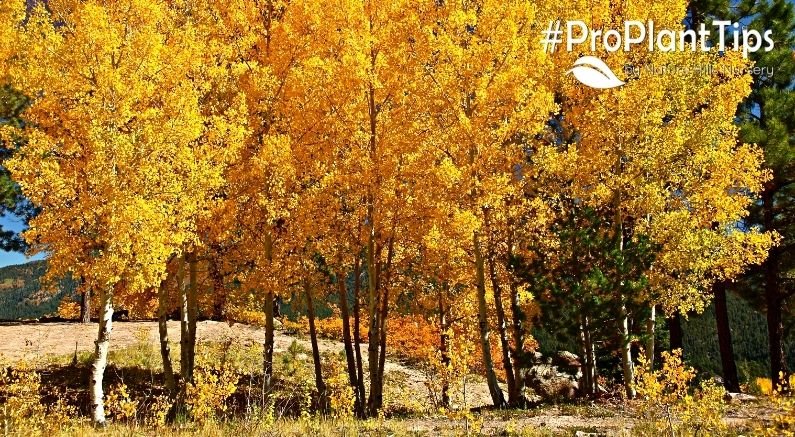Single Stem, Multi-Stem, Shrub Form, Oh My! It can be a bit confusing when selecting a tree or shrub, but Nature Hills Nursery is here to help you take the guesswork out of all the terminology!
Many plants and trees are available in a range of forms and sizes. Rose and Hydrangea Tree forms, Birch and Quaking Aspen, Chaste, Magnolia and Crape Myrtles, Redbuds and more, are just a few of the many plants that have several forms available, or can be trained and pruned into a wide variety of forms once you receive them!
Before you make your purchase, make sure you know what you’re getting! Single-stem, multi-stem, and shrub forms are different, so read on for more information about each.
Single-Stem Tree Form:
These are plants that have one single, straight stem coming up from the ground, branching once they grow higher to form a canopy.
Plants can also be considered ‘single-stem’ when lower branches are removed to raise the height of the branching canopy, referred to as ‘limbed-up’. You will often hear a single-stem plant referred to as Tree-Form. Low branches can be removed as the plant grows taller to keep the single-stem look.
Naturally, single-trunked trees are usually large shade trees and hardwood trees. All tall, impressive specimens that stand out on their own, and are magnificent focal points in the landscape!
When one of these types of tree forms a second trunk, it’s a health hazard. The unstable or weaker trunk needs to be removed, leaving only the central ‘leader’ trunk. Hazards include breakage and splitting which causes damage both to the tree as it peels away and damage to whatever it falls on. There are also pests, moisture/rot, and disease issues caused by ‘included bark’ trapped between the two trunks.

Specialty Single Stem:
A few shrubs like Roses, Lilacs, Rose of Sharon, and Hydrangea, and flowering vines such as Jasmine, Wisteria, and Trumpet vines, have professionally trained versions of the plant that are made into tree forms by way of training or grafting at the nursery. Usually, when grafted, they are on a single stem trunk referred to as a ‘standard’.
When trained this way, hardy vines are trained straight on a sturdy stake for support until the vine becomes a woody trunk that can then support its own canopy afterward.
Multi-Stem Clump Form:
These are plants with 3, 4, and sometimes 5 or more stems, planted together in the ground in close proximity to form a ‘clump’. You will often see Birch trees, for instance, sold as a clump and this is what that means. Always done with the same species, the many trunks all grow together and form a single-looking large tree with many trunks rising up.
Trees grown in multi-stem and clump forms like Birch, Aspen, Oak, and Crape Myrtles, where the nursery plants clumps of individual trees make excellent naturalized plantings such as islands and privacy screens. Use in a front island planting, or specimen planting as a backdrop for your seating areas or to shade your backyard spaces.

Shrub Form:
Shrub-form plants are typically ornamental flowering trees that are not trained as single-stem specimen plants. Instead, they’re pruned back when they are small and encouraged to branch lower to the ground as shrub form plants. We do this with Magnolias, Redbud, Crape Myrtles, Chaste Trees, Dogwood Trees, Amelanchier, Japanese Tree Lilacs, Japanese Maples, and even Citrus trees. It is a fun alternative to a single-stem tree form.
They are referred to as shrubs or bushes and are often shorter than their tree forms. These are great privacy and screening plants, ideal for blocking wind, noise, and unwanted views.

Reach Out Any Time!
So hopefully this demystifies the many forms your trees and shrubs can show up at your door when you order ornamental landscaping plants from NatureHills.com!
Check out our #ProPlantTips for care in our Garden Blog for all you need to know about pruning and maintaining your plants, no matter what form they come in!
Happy Planting!

